Travel guide to Bhutan, the mystic kingdom in the Himalayas
Everything to know about traveling to the Land of The Thunder Dragon:
At last, my husband and I could do our Buthan journey! We had been waiting three years for this moment – due to the pandemic. Yet what took a long time was finally good. This once-in-a-lifetime journey was worth the hassle – booked (and paid) four years ago! If you wonder about Buthan, it really is something special. Think of a nation that measures its success not from an economic perspective but by the happiness of its people. Bhutan is a mystic land of temples and monasteries, deeply rooted in Buddhism. And it is one of the last true unspoiled countries on earth, packed with stunning natural beauty. Find in my travel guide everything you have to know when thinking of coming to Bhutan, the Land of the Thunder Dragon or Druk Yul in the country’s official language of Dzongkha.
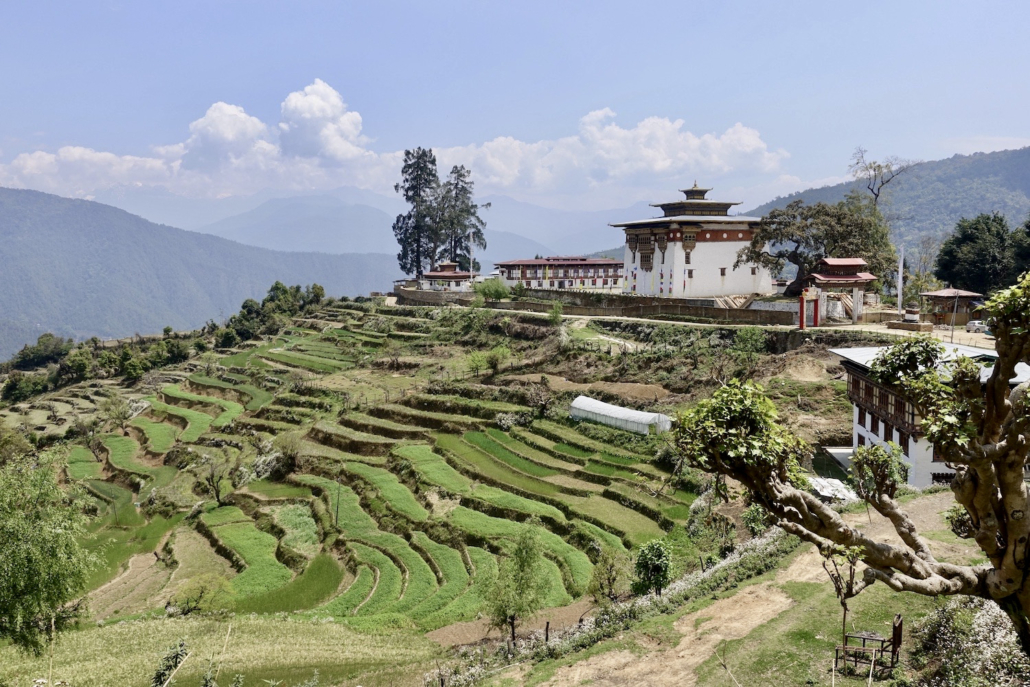
Where lies Bhutan?
Bhutan is a small landlocked country in South Asia. It is nestled between India to the south and China to the north. The kingdom is situated in the eastern Himalayas and has a diverse landscape. This ranges from subtropical plains in the south to the Himalayan peaks in the north (the highest is Gangkhar Puensum: 7,570 m/24,840 ft).
The country is about the size of my home country, Switzerland. Yet it only has 700,000 inhabitants (Switzerland has almost 9 million). The capital of Bhutan is Thimphu. It has a population of around 100,000 and is located at an elevation of 2,248 m/7,375 ft. The ancient capital city was Punakha and was replaced by Thimphu in 1955.
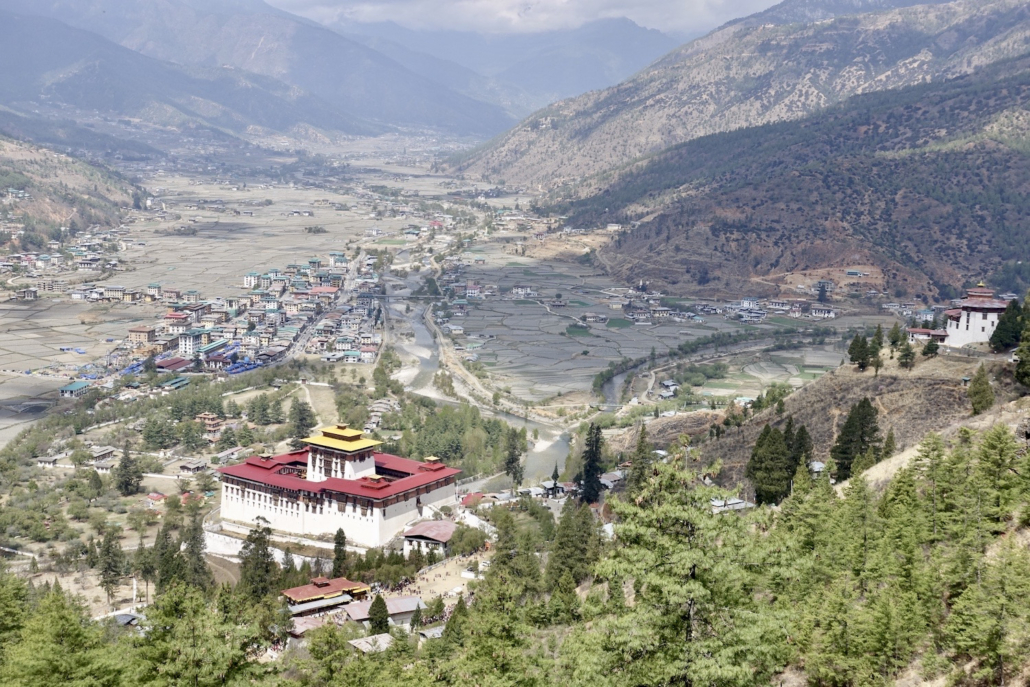
What is to know about Bhutan’s tourism?
Bhutan’s history of tourism is relatively recent. It only opened its doors to foreign visitors in 1974. Prior to this, it had been a largely isolated and mysterious kingdom. Bhutan’s government has always been mindful of the potential impact of tourism on its fragile environment and culture. Therefore, it has taken a cautious approach to developing touristic activities.
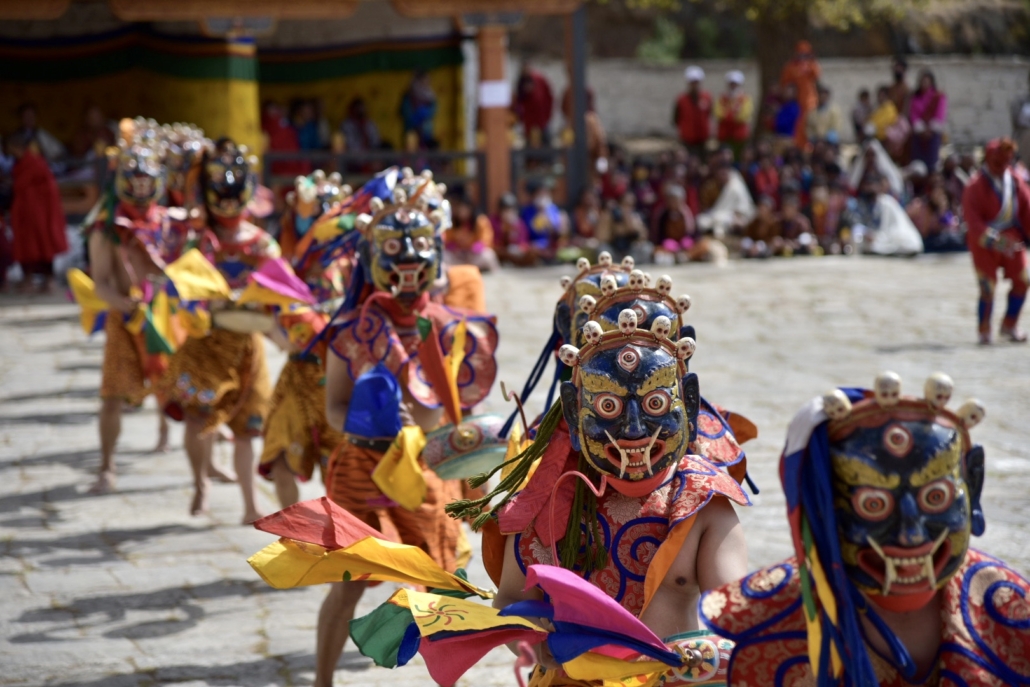
In the early years of tourism, Bhutan limited the number of tourists allowed in the country. Visitors were required to travel with a licensed tour operator and to pay a daily tariff. Before the country closed its borders in March 2020 because of the pandemic, travelers had to spend a minimum of 200 to 250 US$ – depending on the season – for a daily package rate. It included costs for three-star lodging, food, transportation and guide as well as a Sustainable Development Fee (SDF) of 65 US$.
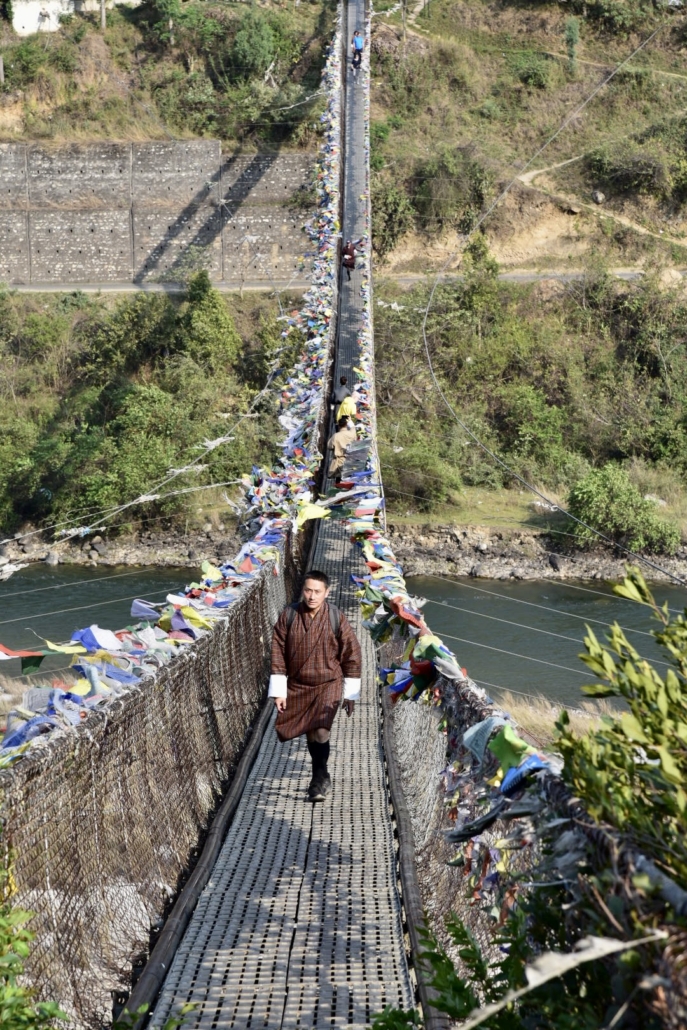
After reopening in September 2023, Bhutan’s government eliminated the minimum daily package rate in favor of raising the SDF from 65 US$ to 200 US$ per day. So, travel costs are no longer covered by the fee. Children between 6-12 years pay 50% of the fee, children 5 years and below are free. The revenue from this fee is used to contribute to the country’s economic, social and cultural development. Visitors from India are exempt from it. For the following two years, they only pay 15 US$ per day.
All visitors require a visa before traveling to Bhutan, except those from India, Bangladesh and the Maldives. It costs 40 US$ per person, and you can apply for it online. Alternatively, if you have your trip organized by a tour operator or a hotel group, they can do this for you. One more note to guides. While they are no longer mandatory for activities within Thimphu and Paro Valley, you still need them once you go beyond this area.
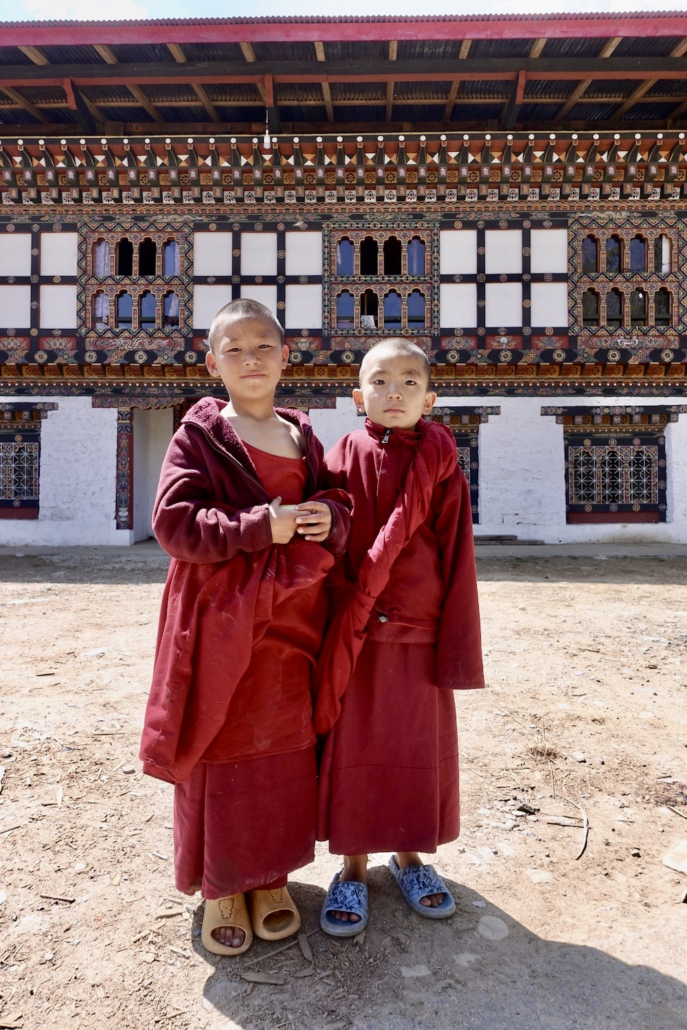
What can you expect in terms of things to see & do in Bhutan?
As outlined above, Bhutan has carefully managed the number of tourists who travel to this country. Therefore, it was able to preserve its unique culture, traditions and nature. As to the latter, this country offers a mesmerizing rural scenery, from green terraced fields to pristine plains, valleys and forests, to dramatic inclines and 7,000 m/23,000 ft peaks. As far as Bhutan’s cultural and traditional independence is concerned, it was also promoted by the fact that it has never been colonized. The country’s culture and traditions are closely intertwined with its religion. Of course this is about Buddhism, which still influences many aspects of life in Bhutan. When it comes to where this religion is practiced, find more in the following sections.
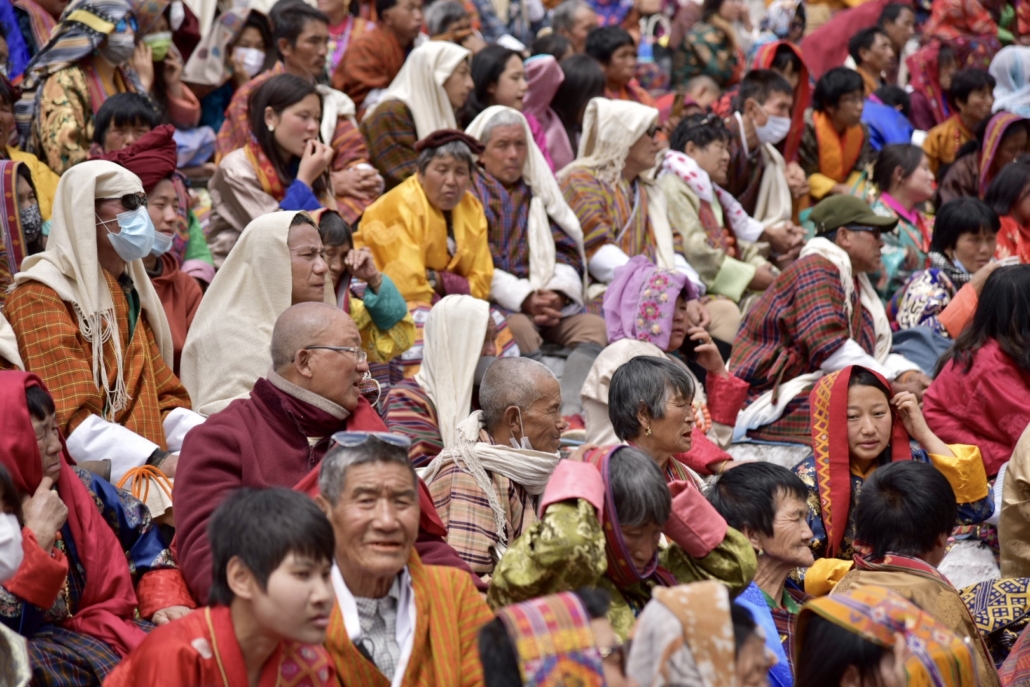
Dzongs and their function
You find dzongs throughout the country’s twenty districts. These former fortresses were built to defend against Tibetan invasions, starting in the 12th century. One dzong per district serves both as the center of administration as well as the center of religion and culture. And this with a strict separation between these two purposes. The dzongs with this split function, respectively their courtyards, usually serve as places for festival celebrations too.
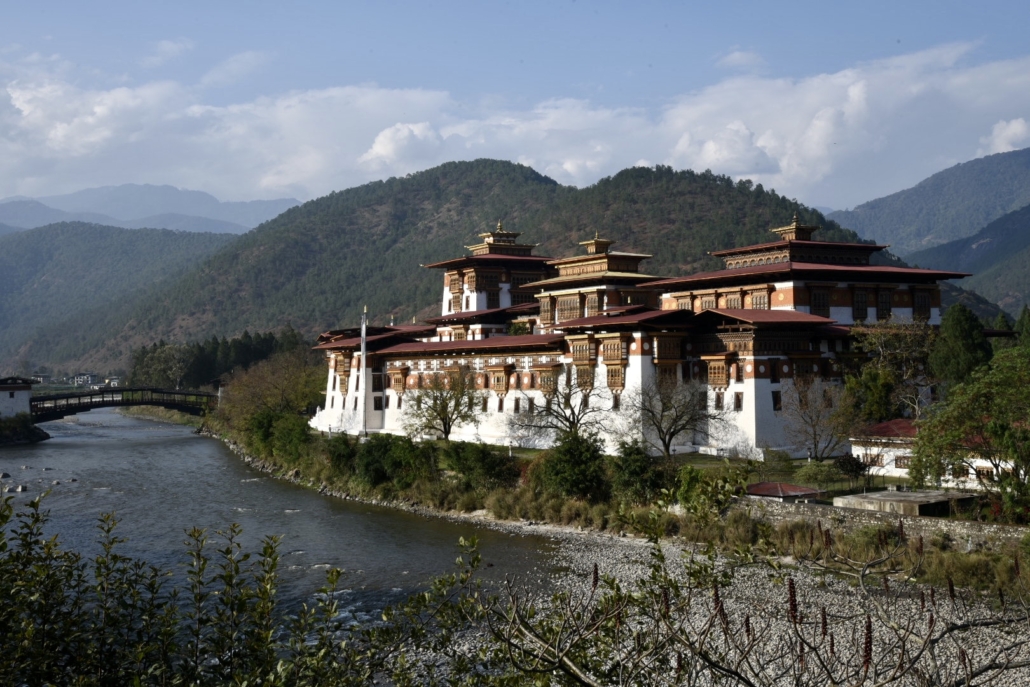
Monasteries and Lhakhangs
10,000 of the country’s 700,000 inhabitants are Buddhist monks. You already can start this “career” at the age of five. And yes, there are also female monks (nuns), yet they are less numerous. Monks live in monasteries, known as Gompas or Goenpas. Temples or Lhakhangs can be part of monasteries, or they can be situated outside of them. Both monks and nuns keep their heads shaved and wear distinguishing maroon robes. As a traveler to Bhutan, you can visit many of the monasteries and temples. While you can usually take photos in these properties, this is not allowed inside the temples. Yet you may enter them and watch how the monks pray, chant and even how they have a meal.
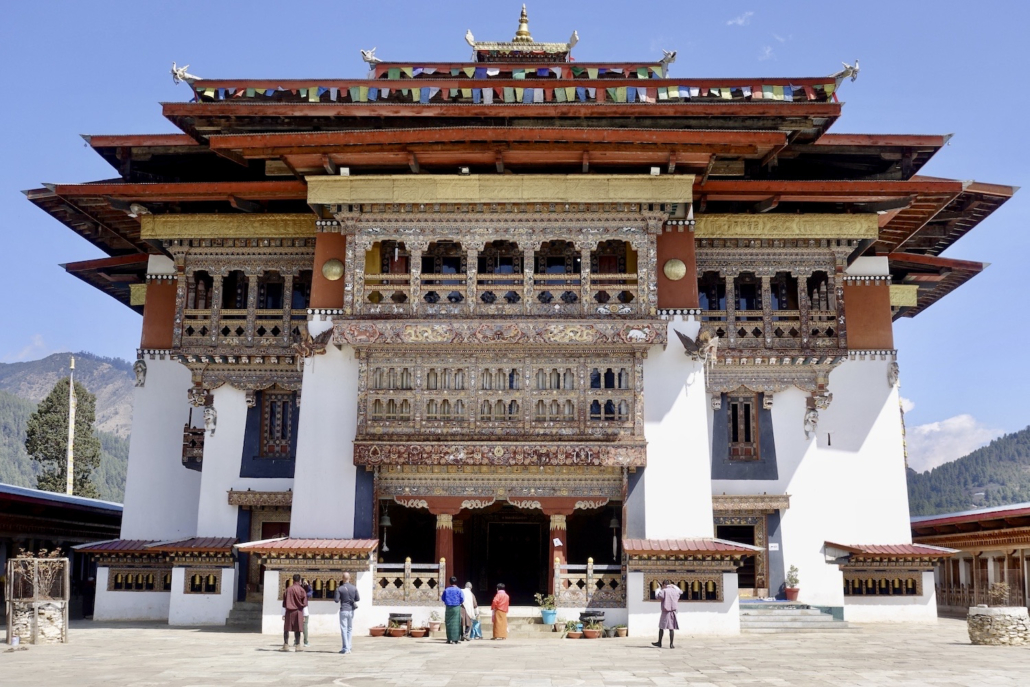
Other Bhutan features
Not only the religious and municipal buildings are impressive for foreigners. Also “normal houses” are quite a sight. Did you know that there is a rule how to build them?
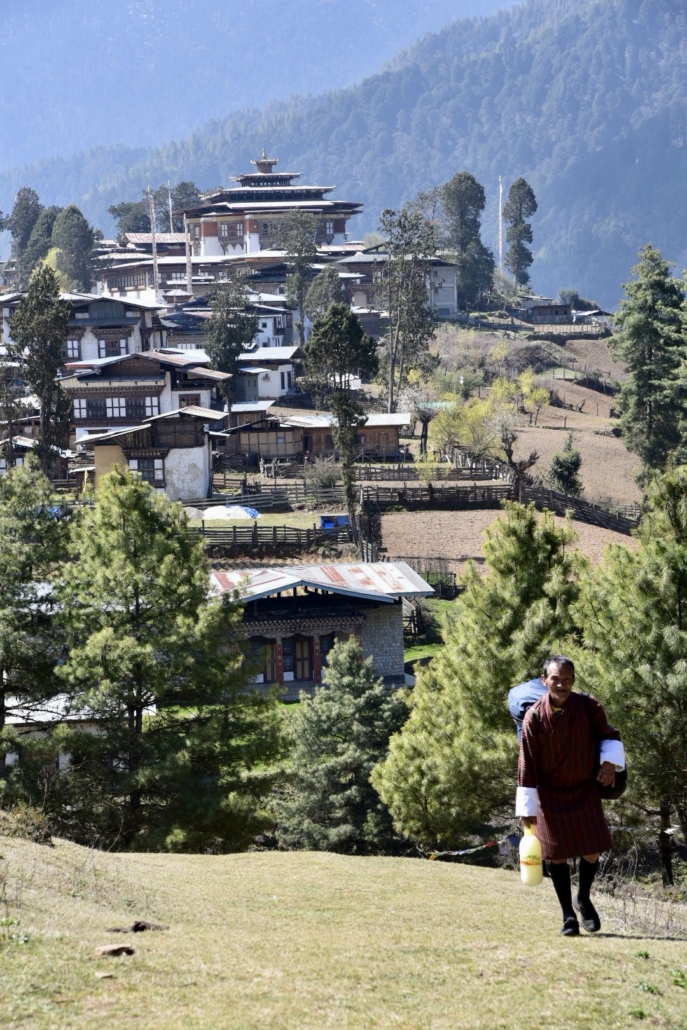
A further particularity is also the dress code for Buthanese people. When locals go to the authorities or visit religious sites, men have to wear the gho, women the kira.
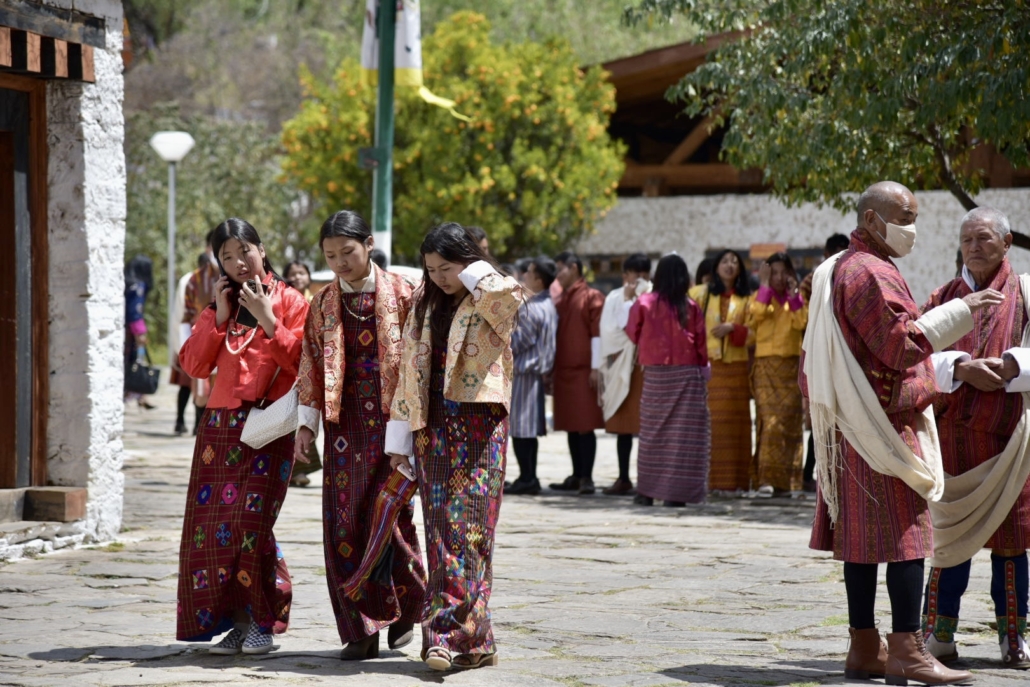
In case you think about visiting Bhutan, it is a good thing if you like to explore your surroundings by foot. Because this is the royal road to discover this beautiful country. Embark on a guided trek across forest trails or follow winding paths on steep mountainsides.
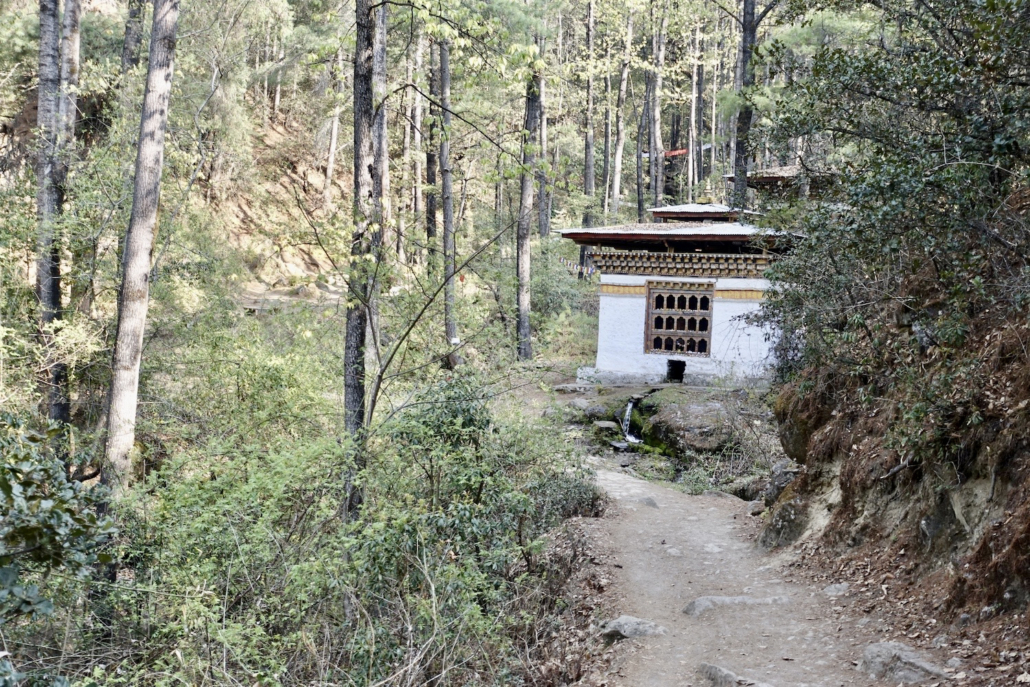
Another activity concerns the country’s national sport, archery. Many hotels have their own ground where you can try it out.
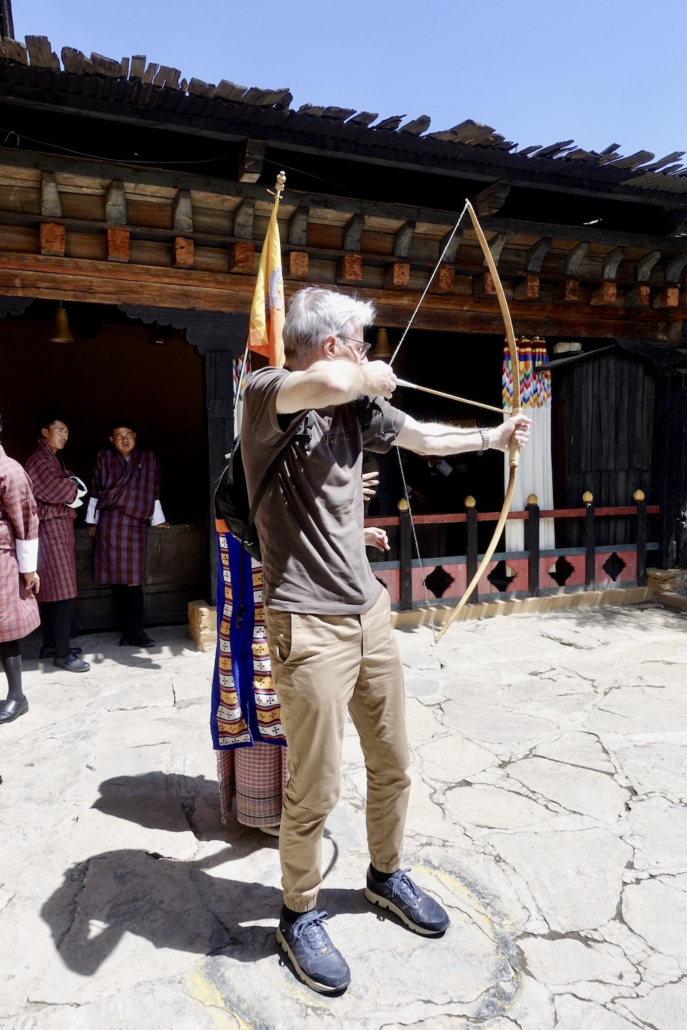
If you like river rafting, a good place to head is Punakha. Here you can do this kind of thing on the twin rivers, “Male” and “Female”. Or maybe you want to go on a ride on Himalayan horses?
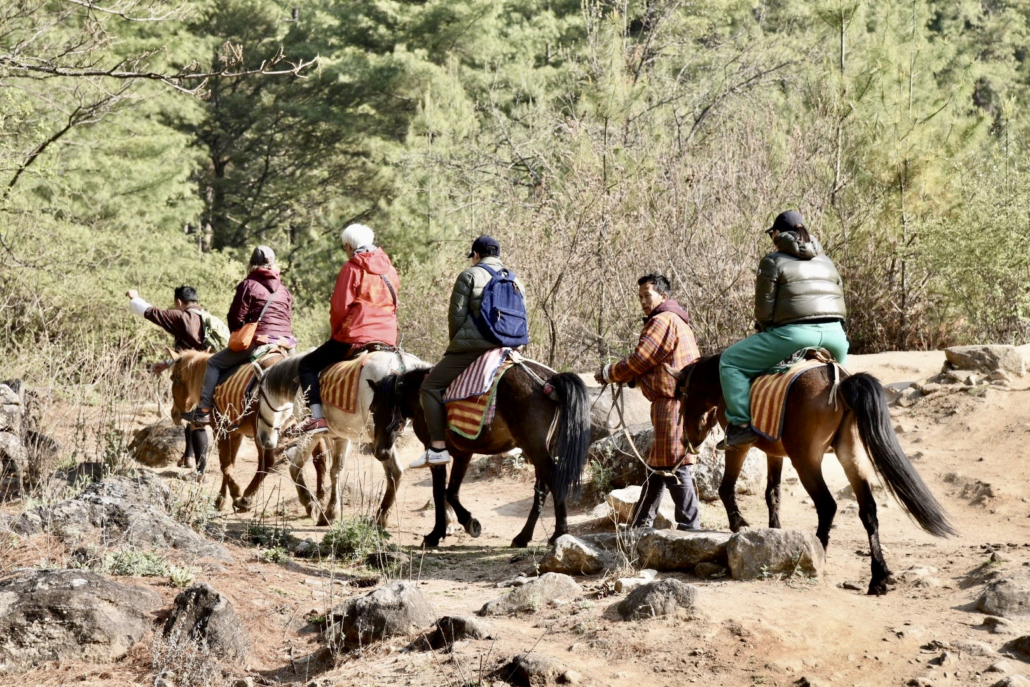
When is the best time to visit Bhutan?
While you can travel Buthan year-round, there are two preferred seasons to do so. I speak here of the country’s west, where most travelers go. The possibly best season to visit this country is fall, from late September to November. This time brings the changing of leaves, along with dry weather and crispy clear days.
The spring months of March to May are best for flora.
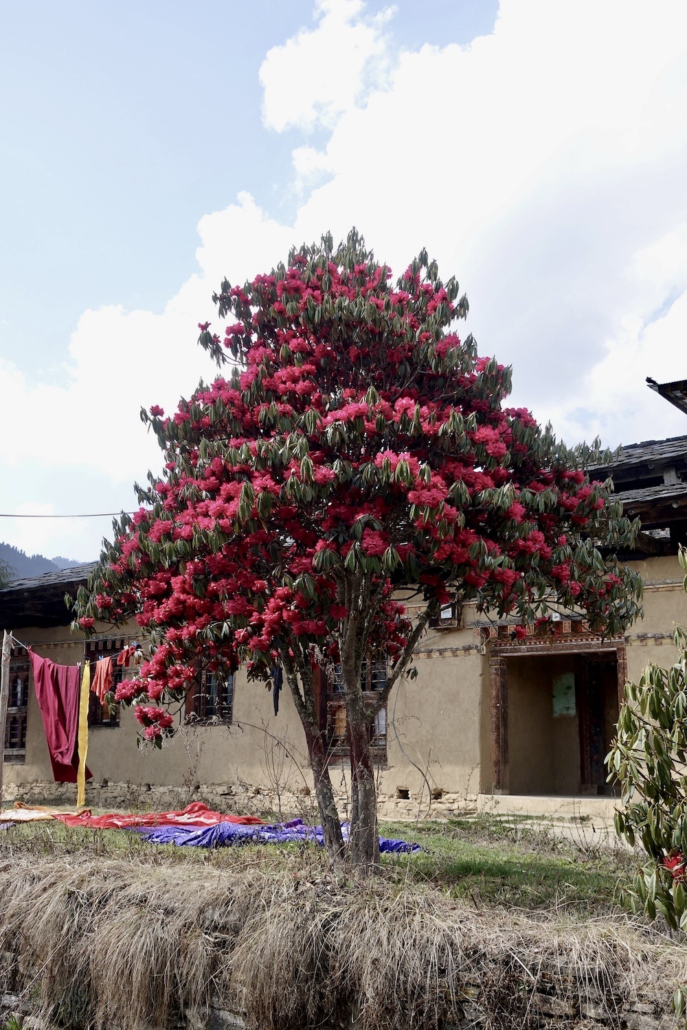
Then the weather is pleasant but not too hot. It is a good time to travel to Bhutan, although there is more chance of overcast days than in fall. It is often windy in the afternoon. Rain is possible but mostly during night. This was the season where my husband and I went to Bhutan. We mostly had sunny days, with short overcast phases. Though we never had a good view of the high mountain peaks, which are perpetually covered in snow. And the soil was extremely dry.
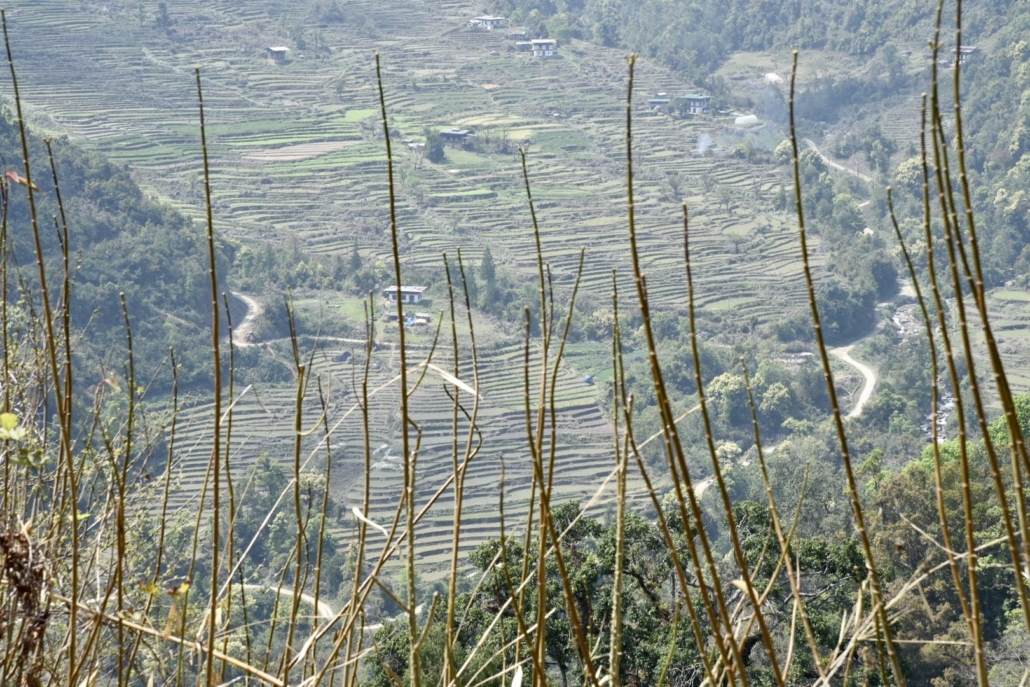
The rainy season (monsoon) is between June and August. Then the temperature is the warmest but there is of course a higher chance of rain. And there can be lower visibility too. The land turns lush and green, what must be quite a sight.
December to February bring sunny days and clear mountain views. Although the temperature drops after dusk, days are still quite warm and pleasant. There is chance of light snow fall in west and central Bhutan, yet larger quantities only occur at higher elevations.
How do you get to Bhutan? What is an ideal pre & post travel plan?
Visitors can travel to Bhutan by air from Bangkok/Thailand (partly with stop in Dhaka/Bangladesh, you can remain on board), Singapore, India (Delhi, Kolkata, Guwahati, Bagdogra) and Kathmandu/Nepal. For now, there are only two airlines that fly into Bhutan, Drukair and Bhutan Airlines. And they do this to Paro, the country’s only international airport. Private jets can only fly into Bhutan after getting the relevant approvals from the authorities.
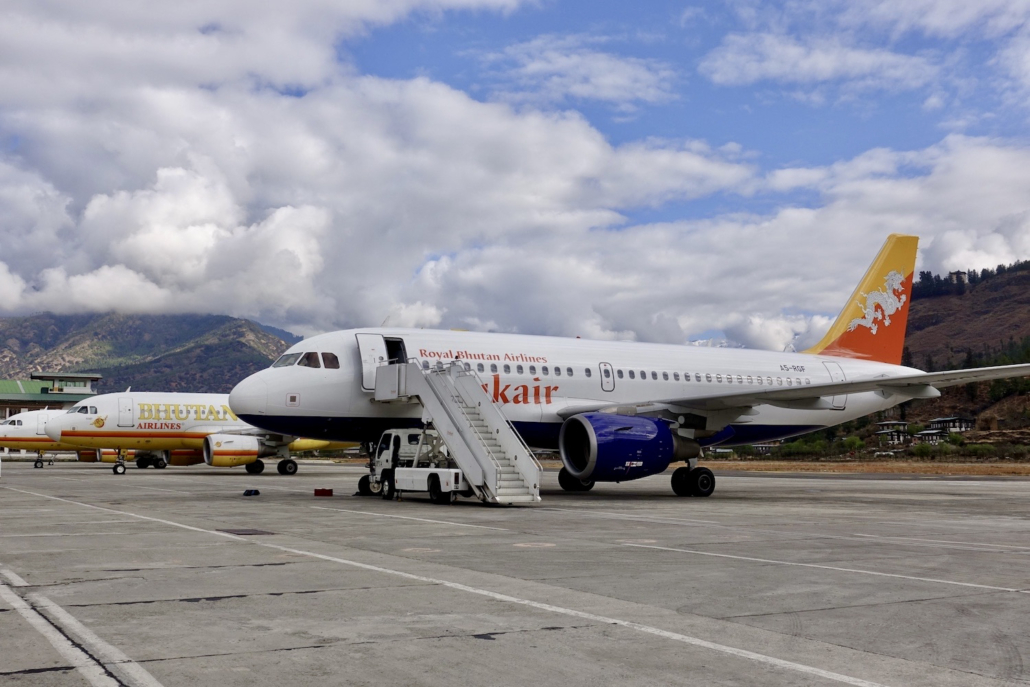
The landing approach at Paro International Airport in Paro is considered to be one of the most challenging in the world. This is due to its location in a steep-sided valley, surrounded by mountains. Only about 20 specially trained pilots are authorized to land here.
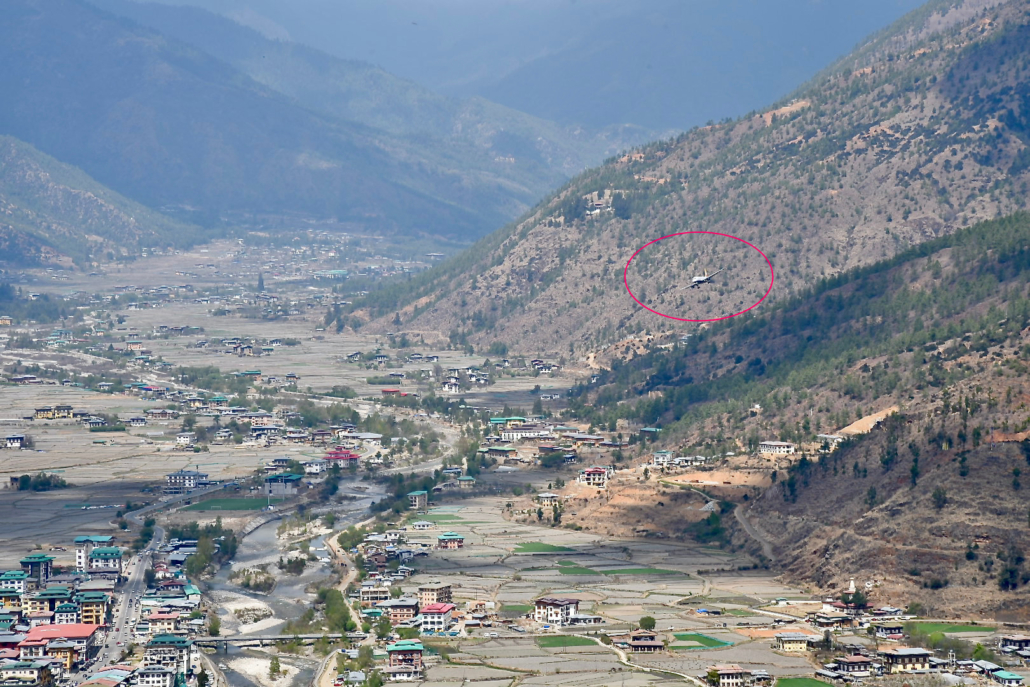
When we flew into Paro at the beginning of April, there were no direct flights from Bangkok (only with stop in Dhaka/Bangladesh). There was only one flight per day, starting at 5 am and landing at 08.30 am. It was carried out by Drukair. For best views of the Himalayan mountain ranges, opt for a seat on the left side for flying in and one on the right side for flying out.
If you wonder about where to stay (in style) in stopover locations on your Bhutan trip, I have suggestions for you as to Bangkok and Hua Hin in Thailand (posts to follow), to Delhi and Agra/Taj Mahal in India as well as to Singapore.
How to get around in Bhutan?
For getting around in west Bhutan – were most travelers go – , it is best to hire a vehicle and driver from a car rental company or a tourism service provider. You cannot drive yourself in Bhutan. If you want to head to Bumthang (central Bhutan), there are domestic flights available.
An option is it also – as my husband and I did – to follow an itinerary set by a hotel. In this case, they arrange a car with driver and guide for you. If you should be into luxury travel, there are three international high-end hotel groups operating in this field. In a post to come, I will go into how to travel Bhutan in style with one of them. It is about COMO. This is the company which has the least expensive journeys – although they are wallet breakers too. There are two more luxury brand that even have more costly offers, more to follow.
Apropos guide, as hinted earlier, you need one once your journey extends beyond Thimphu and Paro. And I would suggest doing so as these both towns are not necessarily what defines Bhutan (see more in my section about a possible itinerary). Besides, guides will be able to give you the insights when visiting temples or fortresses.
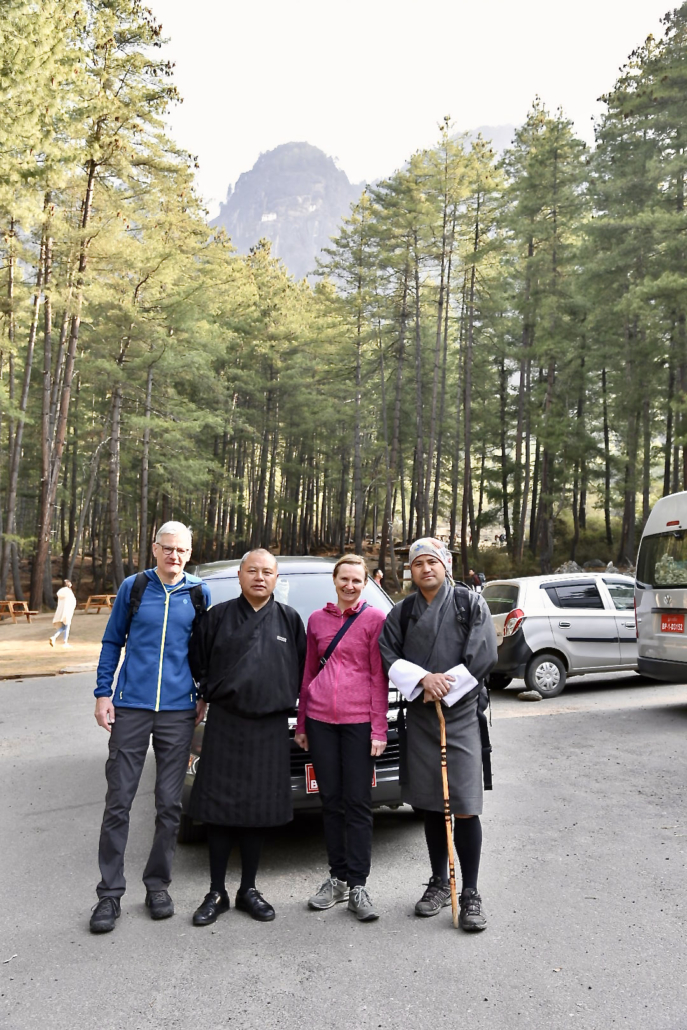
What itinerary to choose as a first timer to Bhutan?
I will go into details where to go and what to do in Bhutan when outlining the itinerary my husband and I took in a post to come. Here I just inform about the most common travel plan for a minimum stay and possible expansion options.
While you could make your stay as short as four or five nights, I suggest opting for a minimum of seven nights (we did nine nights). This allows you to explore the not-to-be missed sites and some lesser visited places in two valleys (Paro/Thimphu and Punakha). Do also consider that you are located in Bhutan at quite high elevations (for instance Paro is at 2,200 m/7,200 ft). So, you need some time for acclimatization.
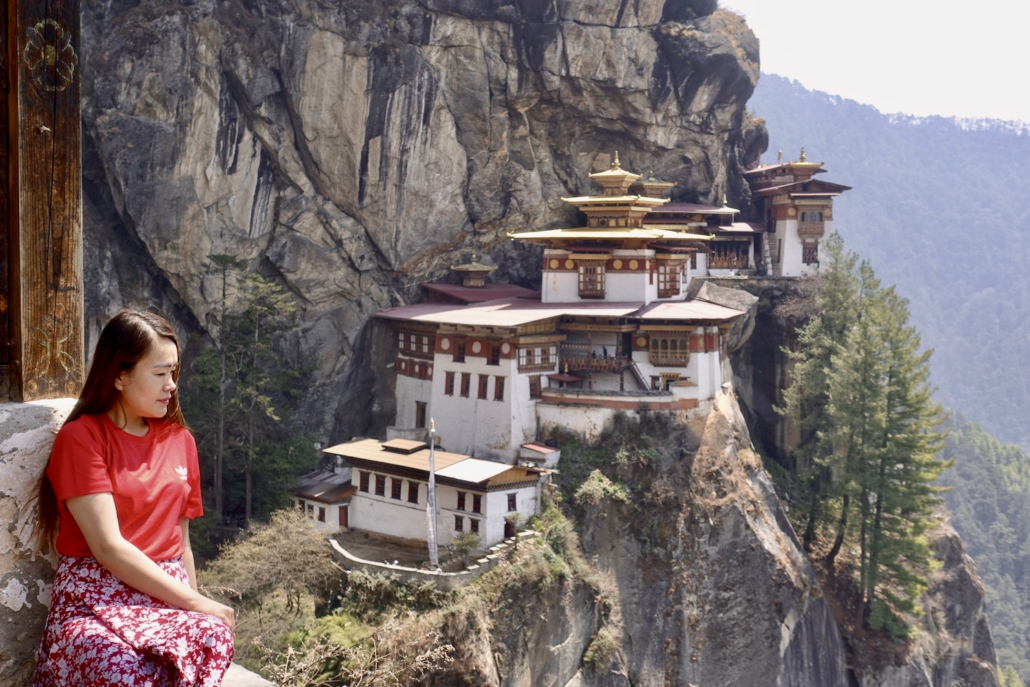
7-night itinerary Bhutan (west Bhutan)
If you have seven nights at your disposal, you can explore three valleys in west Bhutan. I would use day one and two for exploring the Paro Valley (without Tiger’s Nest).
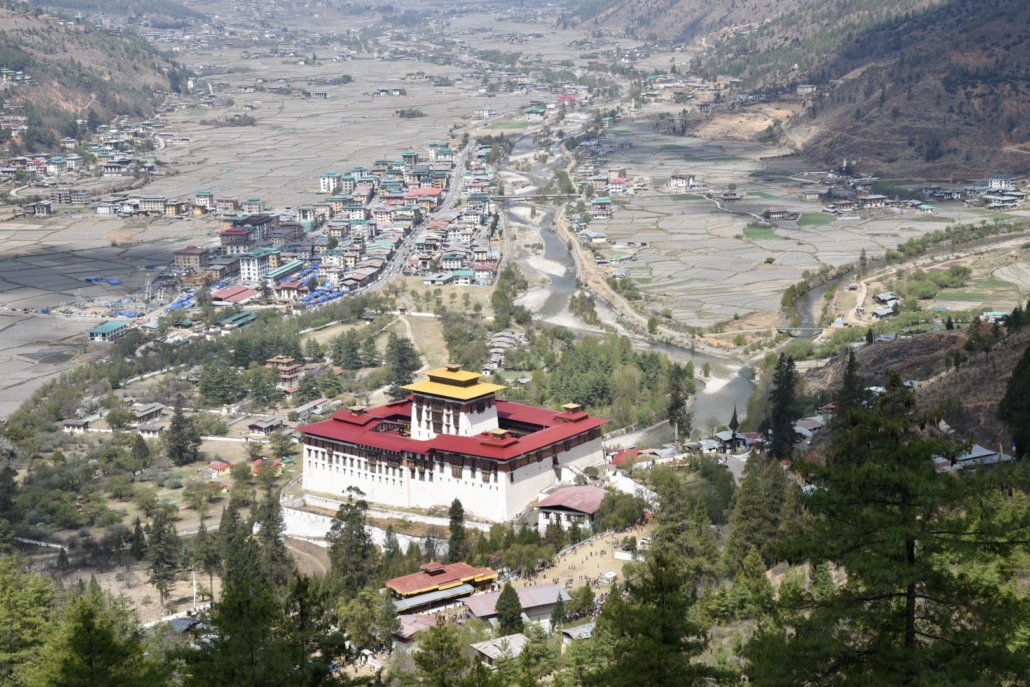
On your way to Punakha (three- to four-hour drive), you can stop in Thimphu (another valley), the capital, for taking in the major sights. As this town is not especially picturesque, I do not consider staying here overnight as a must.
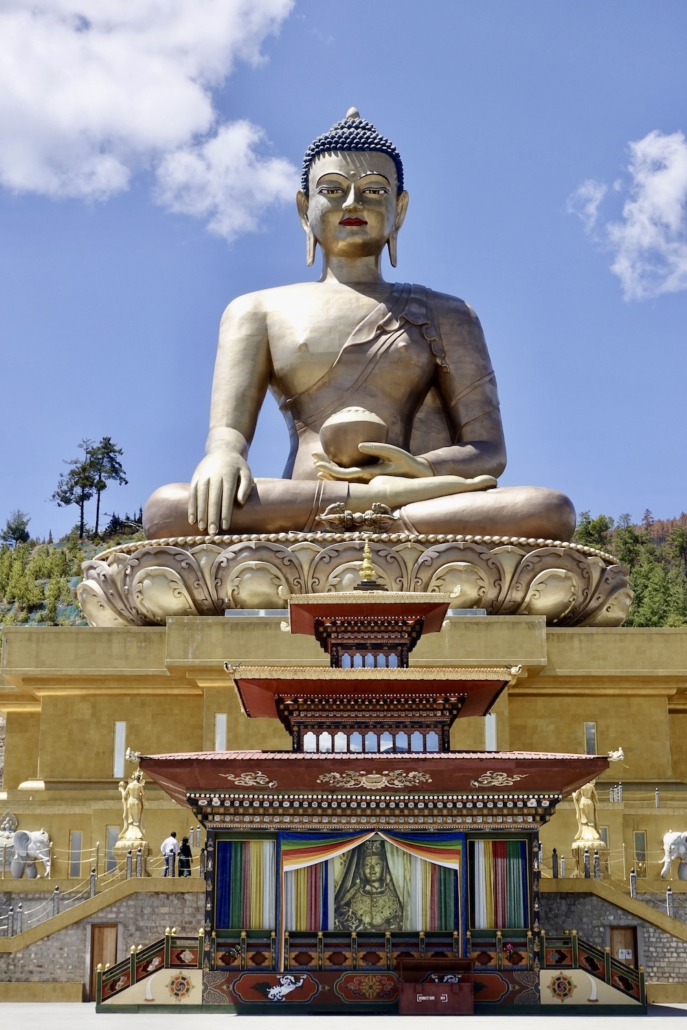
Once arrived in the subtropical Punakha Valley, I recommend three days for checking out this beautiful area, one of the most magnificent ones in Bhutan.
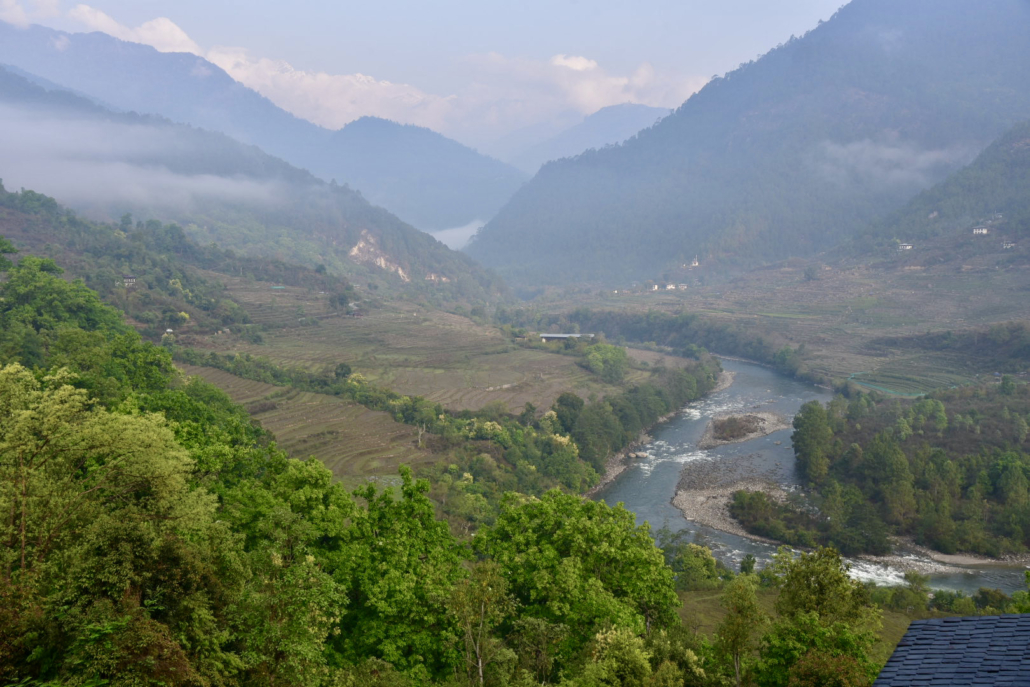
Return to Paro for your days six and seven. On your way back, visit some more spots in the Thimphu Valley before tackling your hike to the Tiger’s Nest (about five hours) on your last day.
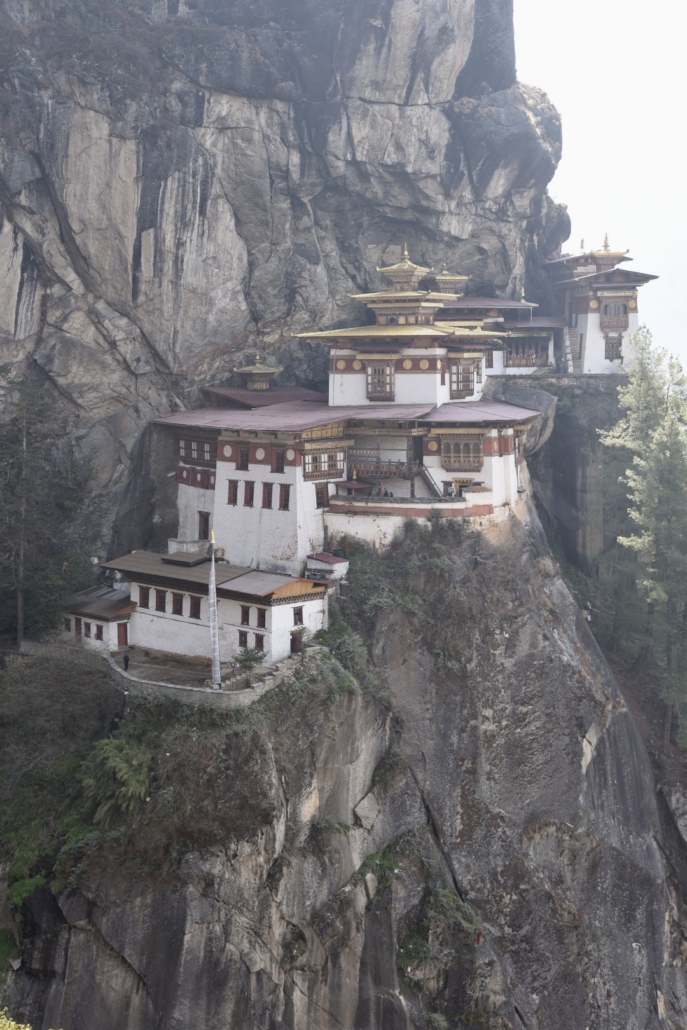
9-night (west Bhutan) respectively 12-night itinerary Bhutan (plus central Bhutan)
In case you have two days more, I suggest adding the Phobjikha Valley, also known as Gangtey Valley, a strikingly appealing glacial valley (three- to four-hour drive).
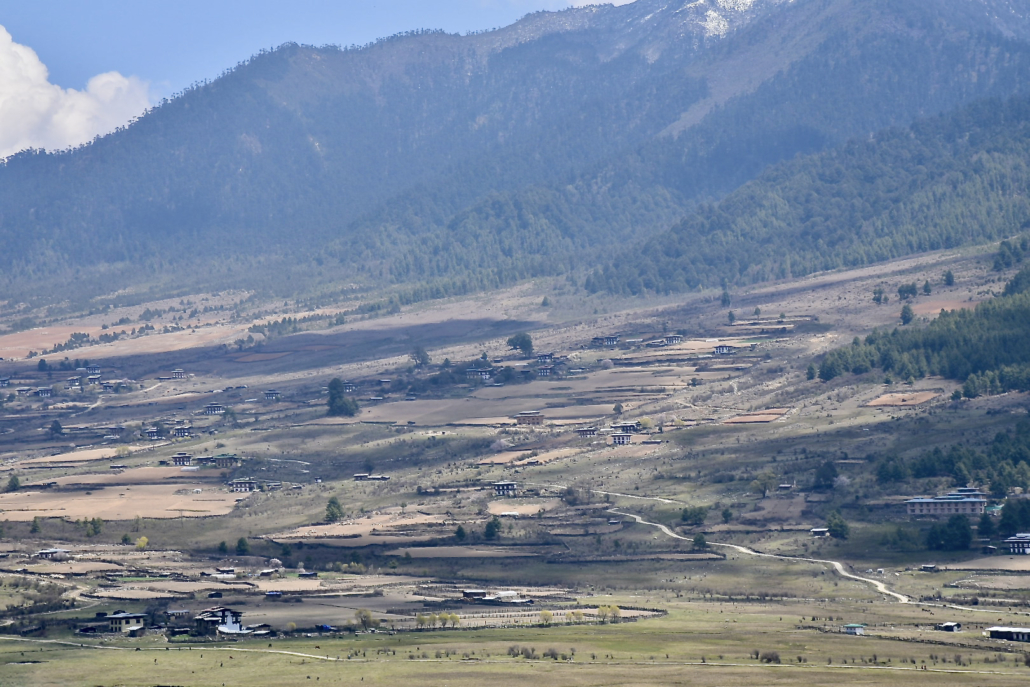
If you have additional three days to spend in Bhutan, another valley might be an option, and this is the Bumthang Valley in central Bhutan. This requires another five-hour drive (from Phobjikha Valley). I have not been here, but it must be a noteworthy place, also called the “Switzerland of the East”. To avoid the long drive back to Paro, consider a flight of about 35 minutes.
Are there any other interesting facts about Bhutan?
Economic situation in Bhutan
Since Bhutan became a democratic constitutional monarchy in 2008, it has relied on a development strategy based on Gross National Happiness, as briefly mentioned above. The country is nowadays considered as lower-middle income country. It has been able to substantially reduce poverty over the last two decades. This was due to the development of hydropower and a strong performance in services, including tourism. Other sectors remain less competitive, so job creation outside of the public sector and agriculture (70% of the population are farmers)
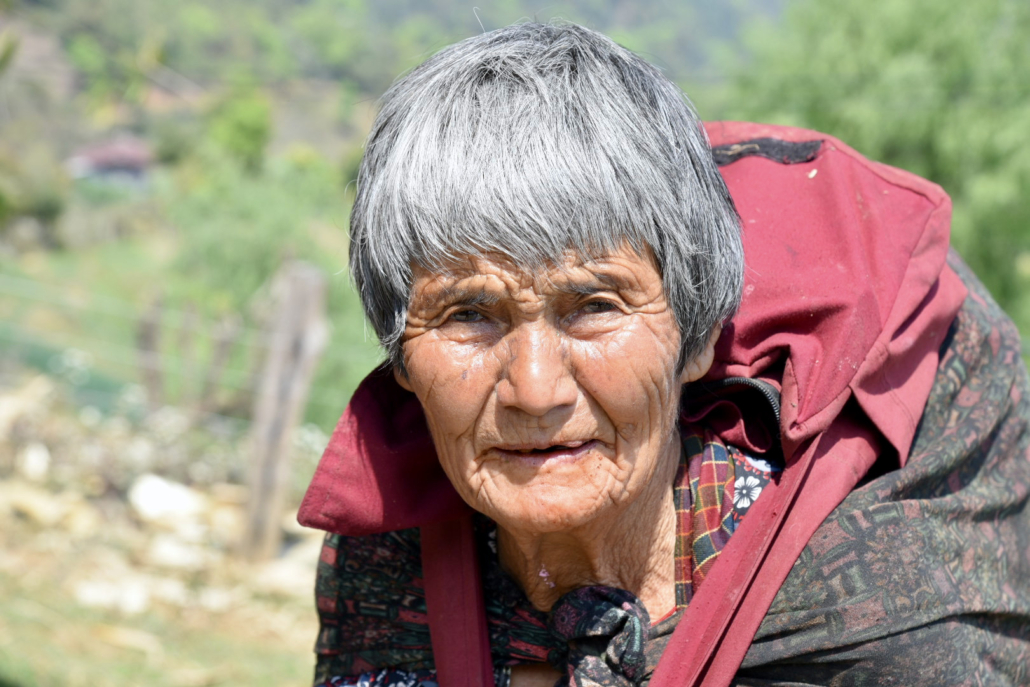
is limited. And tourism has been slow to recover after the pandemic, partly due to the already indicated tripled Sustainable Development Fee (SDF) for international tourists. The small kingdom has strong economic relations with India, also most tourists to Bhutan come from here, more than 70% before the pandemic (source: The World Bank and others).
Buthanese cuisine
The base of the Buthanese cuisine is rice, especially red rice, which has a certain nutty flavor. Buckwheat, wheat and corn are also used, to make noodles
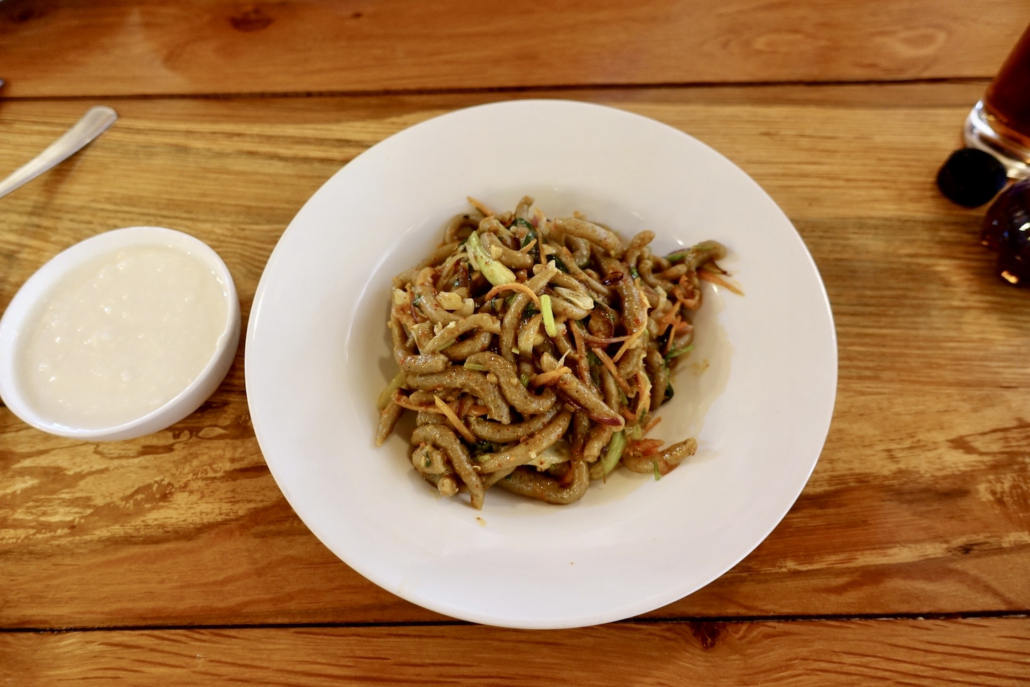
and some kind of polenta. These starch ingredients as well as potatoes are combined with meat just as beef, pork, lamb and yak. Locals use lots of chili to season their dishes, along with cheese.
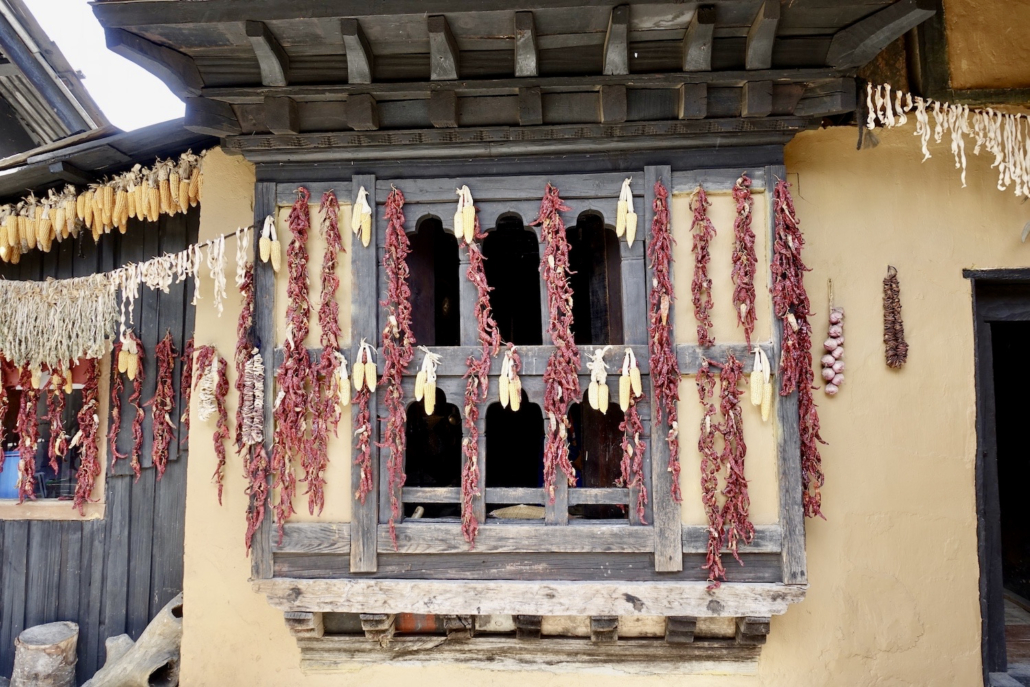
These are also the star ingredients for their national dish, Ema Datshi.
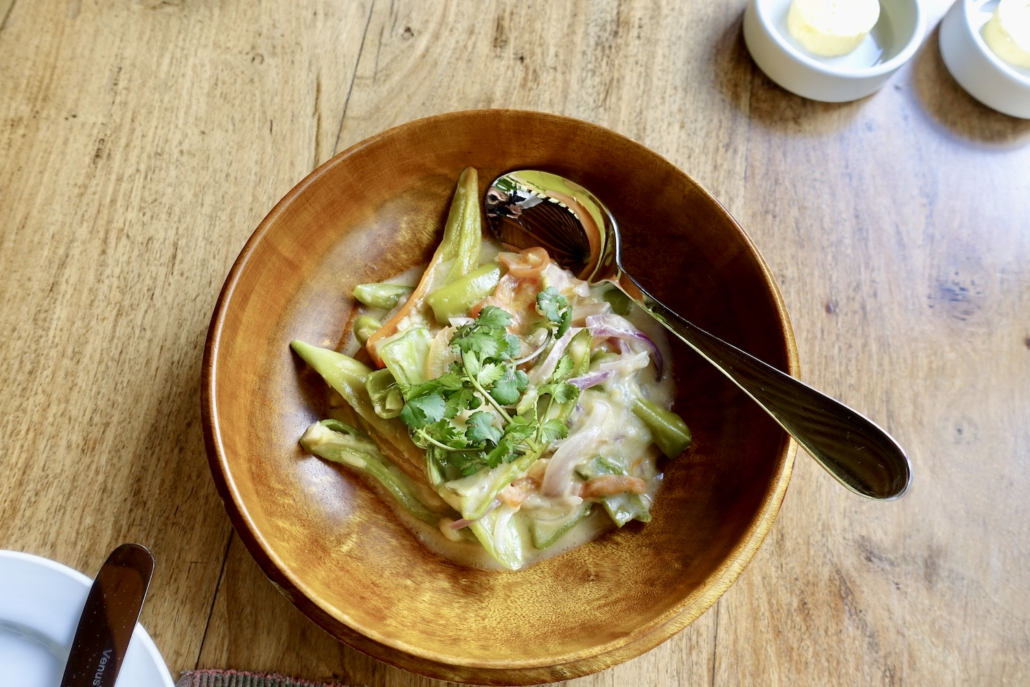
Another dish that you get everywhere in Bhutan are Momos.
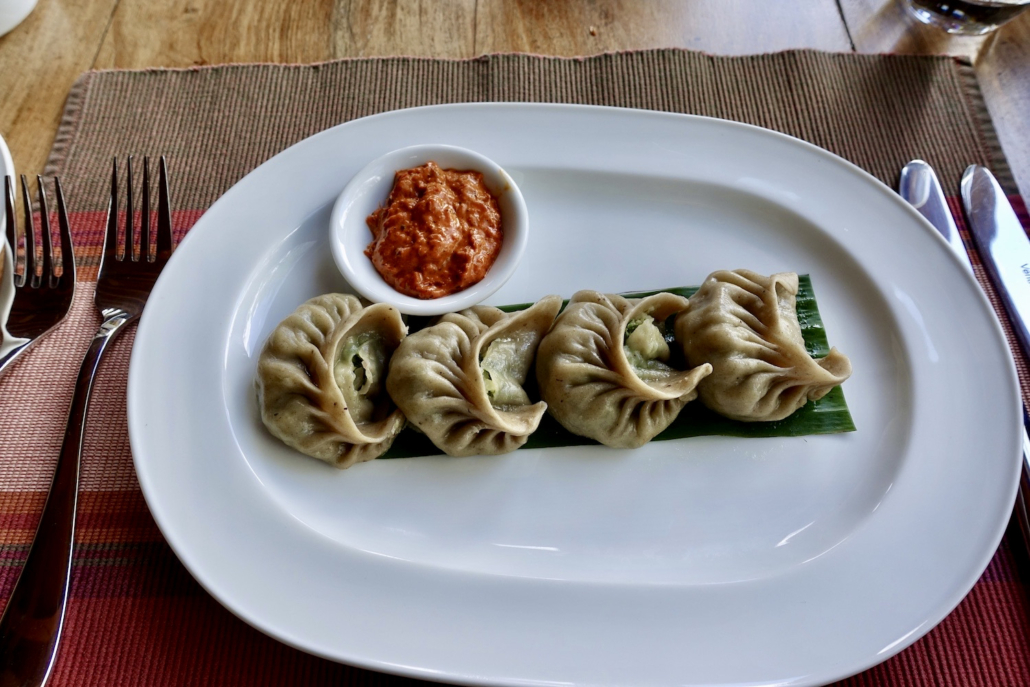
These dumplings are filled with vegetable or meat and are mostly served steamed. And of course you get chili paste with it. Furthermore, Indian food is also widely available.
As to beverages, there is Suja, a tea made of butter. The most common alcoholic drink is Ara. It is produced by fermenting or distilling wheat, rice, millet, barley or buckwheat.
Bhutan Animals
More than 70% of Bhutan’s territory is covered by forest. This area is home to quite a diversity of wildlife. There is the takin, the national animal of Bhutan. It has a nose like a moose, horns like a wildebeest and a body like a bison. So, it is quite an odd-looking creature.
But there is more of wildlife. Bhutan is home to tigers, one-horned rhinos, golden langurs, leopards, snow leopards, Asiatic elephants and red pandas. There are also lots of birds, among them the black necked cranes
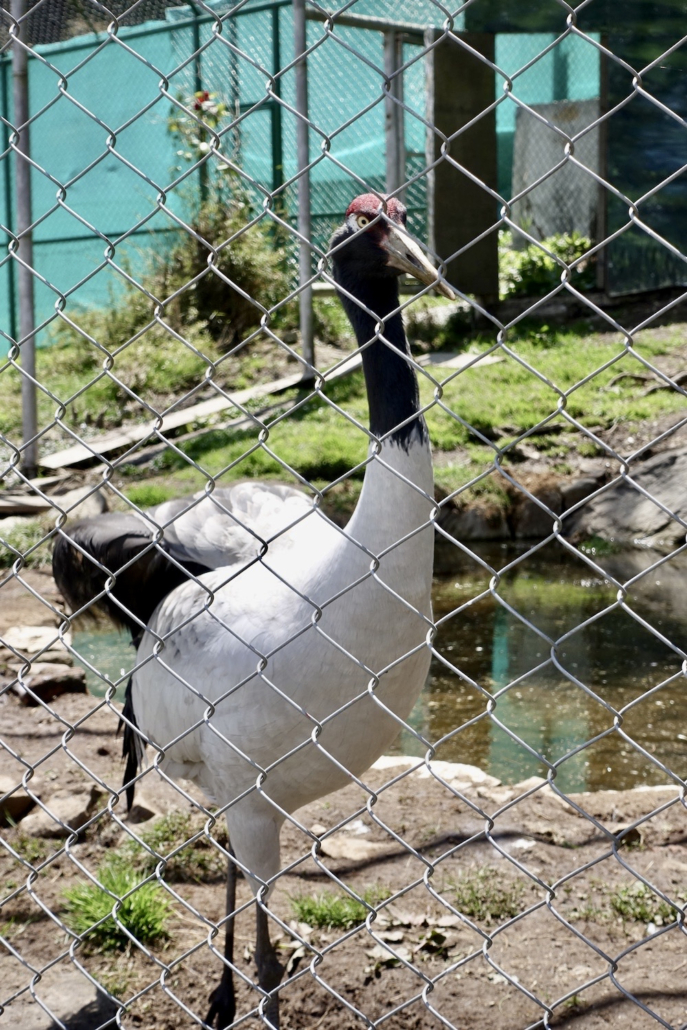
and the white bellied herons.
What is next on my blog about Bhutan?
After this travel guide to Bhutan, I will provide a perfect 9-day itinerary for the Land of the Thunder Dragon. A post about how to explore Bhutan with an arrangement by hotels will follow. As we love luxury getaways, it is about upscale lodging. As hinted earlier, there are three luxury hotel groups operating on such a basis in Druk Yul. And I will compare them with each other. After this look at “the luxury threesome”, I will go into our choice’s details, and this is COMO. Finally, there will be a blogpost about where to stay before and after a Bhutan trip. As we flew in from Bangkok, we had a pre-Bhutan stay in Bangkok and a post-Bhutan one in Hua Hin/Thailand.
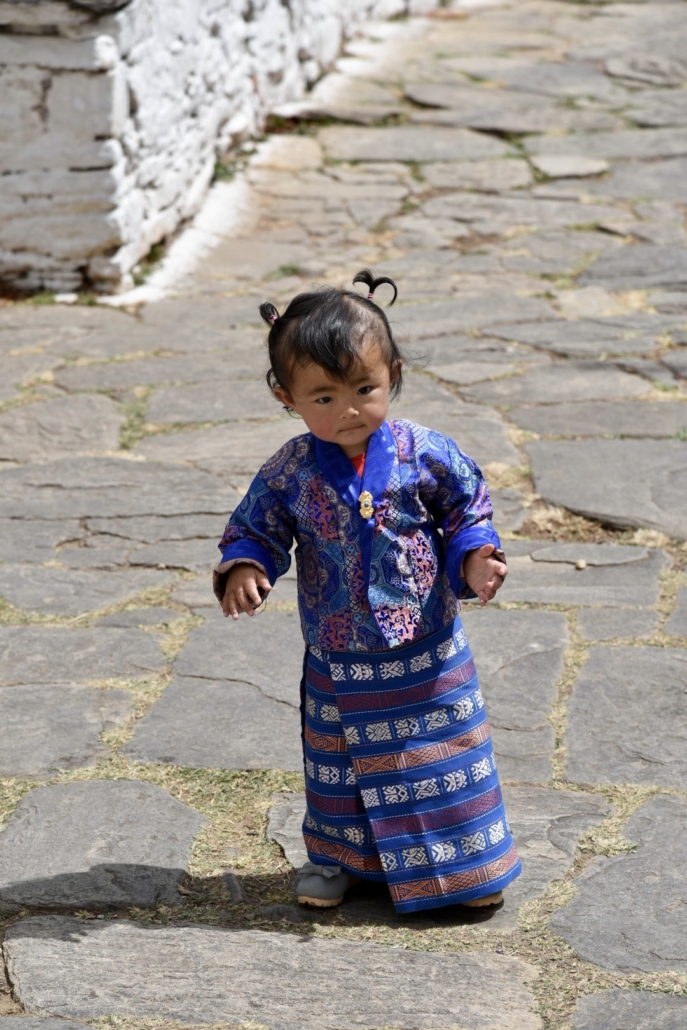
Date of visit: April 2023
Pin it for later
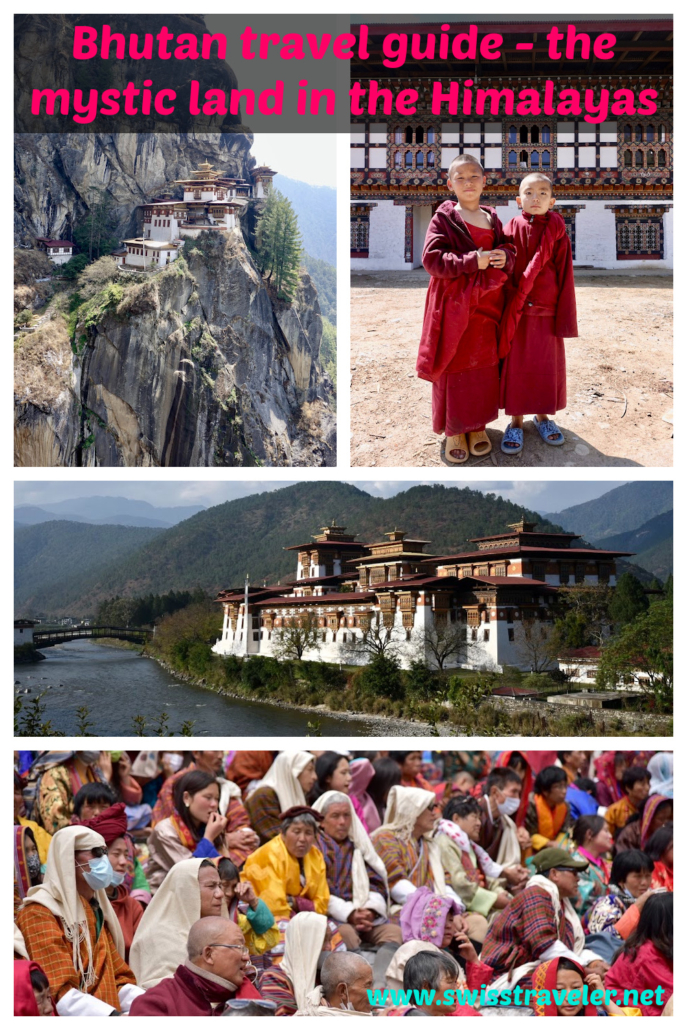
The post Travel guide to Bhutan, the Himalayan kingdom full of culture, tradition & spirituality first appeared on Swiss Traveler

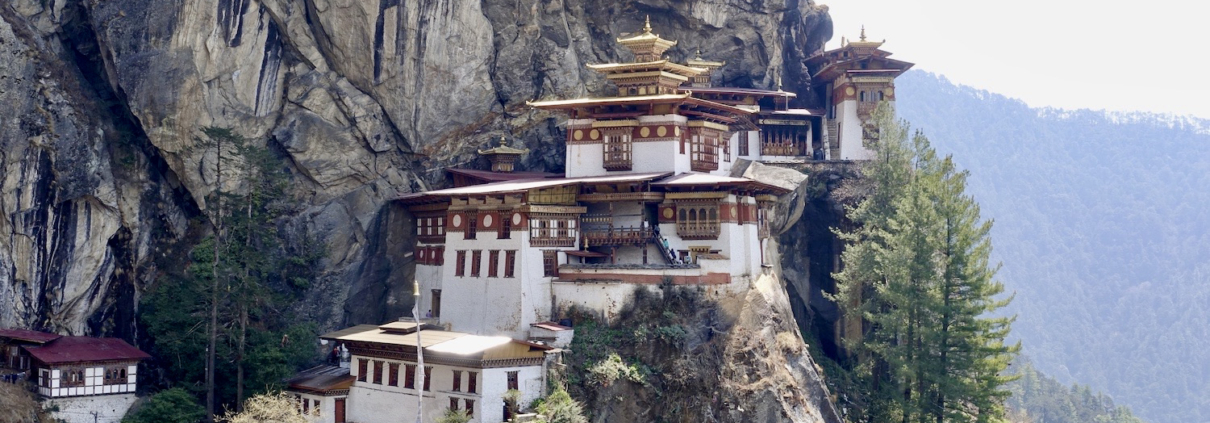
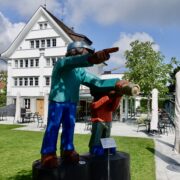
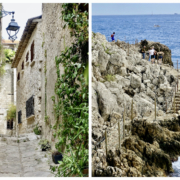
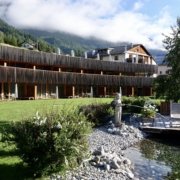

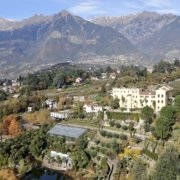
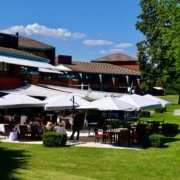


Leave a Reply
Want to join the discussion?Feel free to contribute!